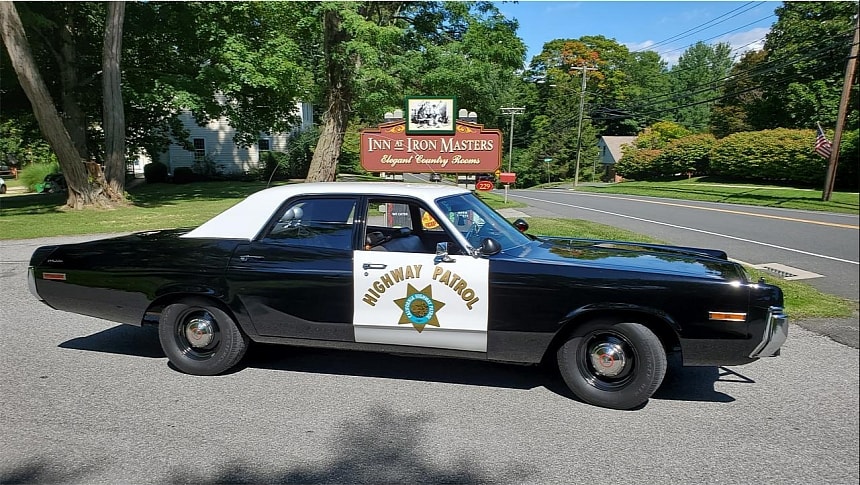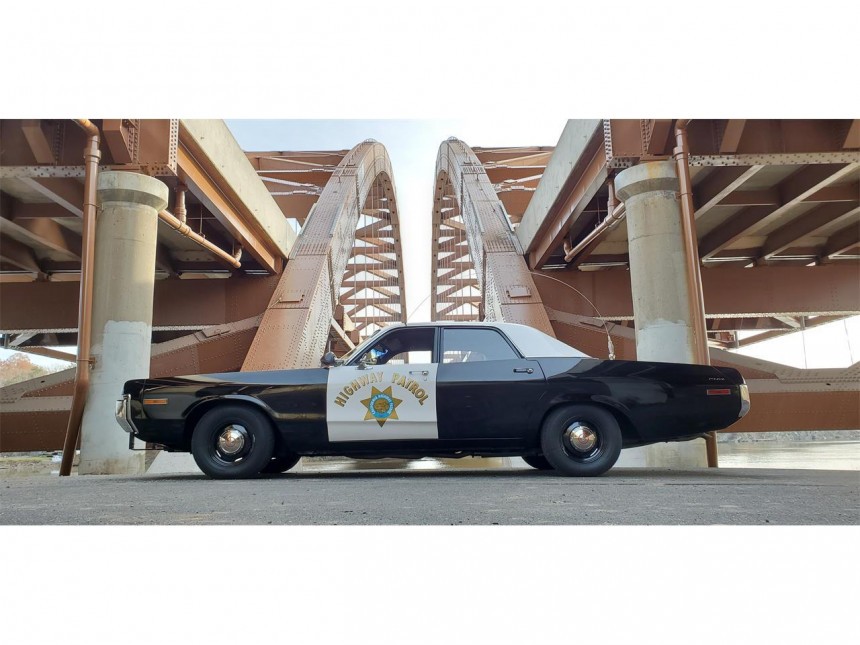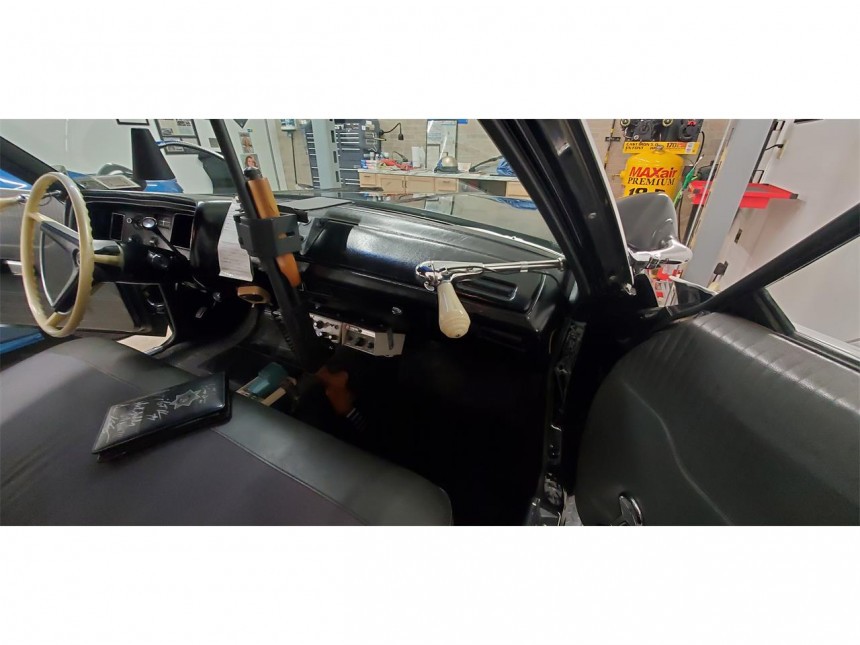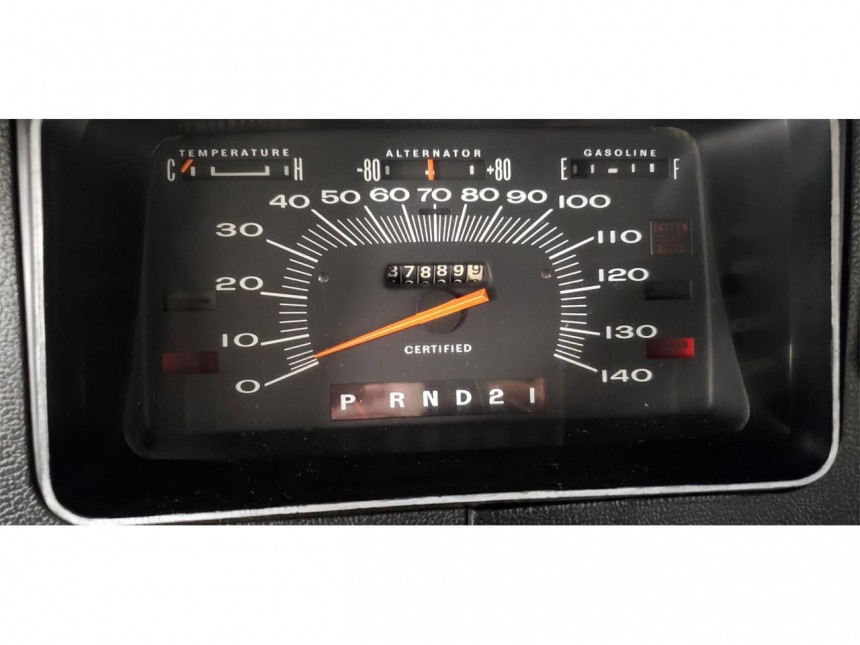1972 must have been a terrible year for muscle car fans when it became absolutely clear to everyone that American motoring was on a collision course with horsepower mass extinction. Carmakers retired their most performant models. The top predators were getting muffled by the scavengers from the insurance companies and the parasites from the emissions regulating committees.
Amid this sickening debut of the Malaise era, Dodge received a fleet order for 1,100 cars from a state agency in California. For years, the same customer had been the single largest purchaser of these special automobiles nationwide, so its specifications were eventually found elsewhere in service cars nationwide. The 1972 order falls out of line because it was a California-only package that wasn’t replicated in other states.
The cars’ most striking features were the two-tone livery – plain-Jane black and white combo, nothing fancy – and the heavy-duty equipment required for extended hours of intense operation under the arid California sun. If those two hints aren’t enough to call it what it is, then the push-bumper on the front should give it right away.
It’s the 1972 Dodge Polara CHP, as in California Highway Patrol, that we’re talking about here, and this Mopar is truly a rarity nowadays. Out of the 1,100-strong batch ordered and built in the spring of that year, only a handful remain today (literally, less than five are known to survive). It’s not uncommon for police interceptors to get written off for various reasons before the end of their life cycles.
That explains why so few are left today, and their rarity is surpassed only by the attention they get from enthusiasts and former or active police officers. It was a small wonder since the CHP cars were feared on both sides of the law as one of the fastest police vehicles on the roads. The street racers had every reason not to want to see its silhouette, and the other cop cars were getting one hell of a leg stretching session during the lunch runs.
The Polara CHP’s role was clear regarding the lead-footed society: hunting down muscle cars. But what about lunch runs? That was a friendly showdown between a California Highway Patrol car and one from neighboring Nevada. The last one to a preselected lunch place had to buy the winner a meal.
One of those iconic black-and-white cars from the early seventies is up for sale after a 25-year ownership and a proven track record in the field. The car was assembled in March 1972 to CHP specifications. Still, the police put it into service half a year later, in September.
Twenty months and 75,332 miles (121,209 km) later, the car was retired, repaired, and sold for 905 dollars. The officer who drove it while on active duty wanted to buy it, but police regulations prevented him from purchasing a CHP vehicle. A policeman's friend did him the favor of going to the auction and getting the car, only to resell it to the cop.
The law said nothing against buying cars from friends, whether police cars or not, so the deal was beyond suspicion. From 1974 to 1999, the officer had the vehicle for personal use and regular TLC. However, the retired car was eventually parked and seldom used, so it was only natural to find another owner.
The car was sold to a man looking for a genuine police car for six years, and the purchase went like clockwork. One day, the buyer got wind of the 1972 Polara and called the owner. After some back and forth, the prospect asked for photos of the car and some documents. On a Monday morning, the requested info arrived, and the two men struck a deal before noon.
3,000 dollars was the price paid for the reputed Dodge, with another large going for transportation services. Ironically, the check arrived at the seller two hours before the tow truck. Since that moment, the car had one owner, who also performed a minute restoration on the car, using as many original and new old stock parts as he could find.
Like the previous private owner, he also drove the Dodge regularly, only in good weather and on occasions. Hence, the odometer now reads 37,889.9 miles. That’s actually 137,899.9 (221,864 kilometers), but that’s about the only giveaway sign about the car’s true age. The original motor and transmission are still inside the vehicle; the documents will prove its authenticity.
In 1972, the fastest car on the Californian highways was powered by a 440-cubic-inch V8, the famous 7.2-liter Magnum with dual exhaust, heavy-duty parts, and high-performance specs. 320 horses and 380 lb-ft (324 PS, 515 Nm) SAE net rating wasn’t bad, considering the police interceptor had a speedo certified to 140 mph (225 kph).
The asking price for this super-rare Mopar is $72,000 – with a ‘best offer takes it home’ reserve – and the buyer gets assured that the strict maintenance on the car was performed with clockwork precision. Play the video below and listen to the owner telling the car's story.
The cars’ most striking features were the two-tone livery – plain-Jane black and white combo, nothing fancy – and the heavy-duty equipment required for extended hours of intense operation under the arid California sun. If those two hints aren’t enough to call it what it is, then the push-bumper on the front should give it right away.
It’s the 1972 Dodge Polara CHP, as in California Highway Patrol, that we’re talking about here, and this Mopar is truly a rarity nowadays. Out of the 1,100-strong batch ordered and built in the spring of that year, only a handful remain today (literally, less than five are known to survive). It’s not uncommon for police interceptors to get written off for various reasons before the end of their life cycles.
The Polara CHP’s role was clear regarding the lead-footed society: hunting down muscle cars. But what about lunch runs? That was a friendly showdown between a California Highway Patrol car and one from neighboring Nevada. The last one to a preselected lunch place had to buy the winner a meal.
One of those iconic black-and-white cars from the early seventies is up for sale after a 25-year ownership and a proven track record in the field. The car was assembled in March 1972 to CHP specifications. Still, the police put it into service half a year later, in September.
The law said nothing against buying cars from friends, whether police cars or not, so the deal was beyond suspicion. From 1974 to 1999, the officer had the vehicle for personal use and regular TLC. However, the retired car was eventually parked and seldom used, so it was only natural to find another owner.
The car was sold to a man looking for a genuine police car for six years, and the purchase went like clockwork. One day, the buyer got wind of the 1972 Polara and called the owner. After some back and forth, the prospect asked for photos of the car and some documents. On a Monday morning, the requested info arrived, and the two men struck a deal before noon.
Like the previous private owner, he also drove the Dodge regularly, only in good weather and on occasions. Hence, the odometer now reads 37,889.9 miles. That’s actually 137,899.9 (221,864 kilometers), but that’s about the only giveaway sign about the car’s true age. The original motor and transmission are still inside the vehicle; the documents will prove its authenticity.
In 1972, the fastest car on the Californian highways was powered by a 440-cubic-inch V8, the famous 7.2-liter Magnum with dual exhaust, heavy-duty parts, and high-performance specs. 320 horses and 380 lb-ft (324 PS, 515 Nm) SAE net rating wasn’t bad, considering the police interceptor had a speedo certified to 140 mph (225 kph).
The asking price for this super-rare Mopar is $72,000 – with a ‘best offer takes it home’ reserve – and the buyer gets assured that the strict maintenance on the car was performed with clockwork precision. Play the video below and listen to the owner telling the car's story.


















